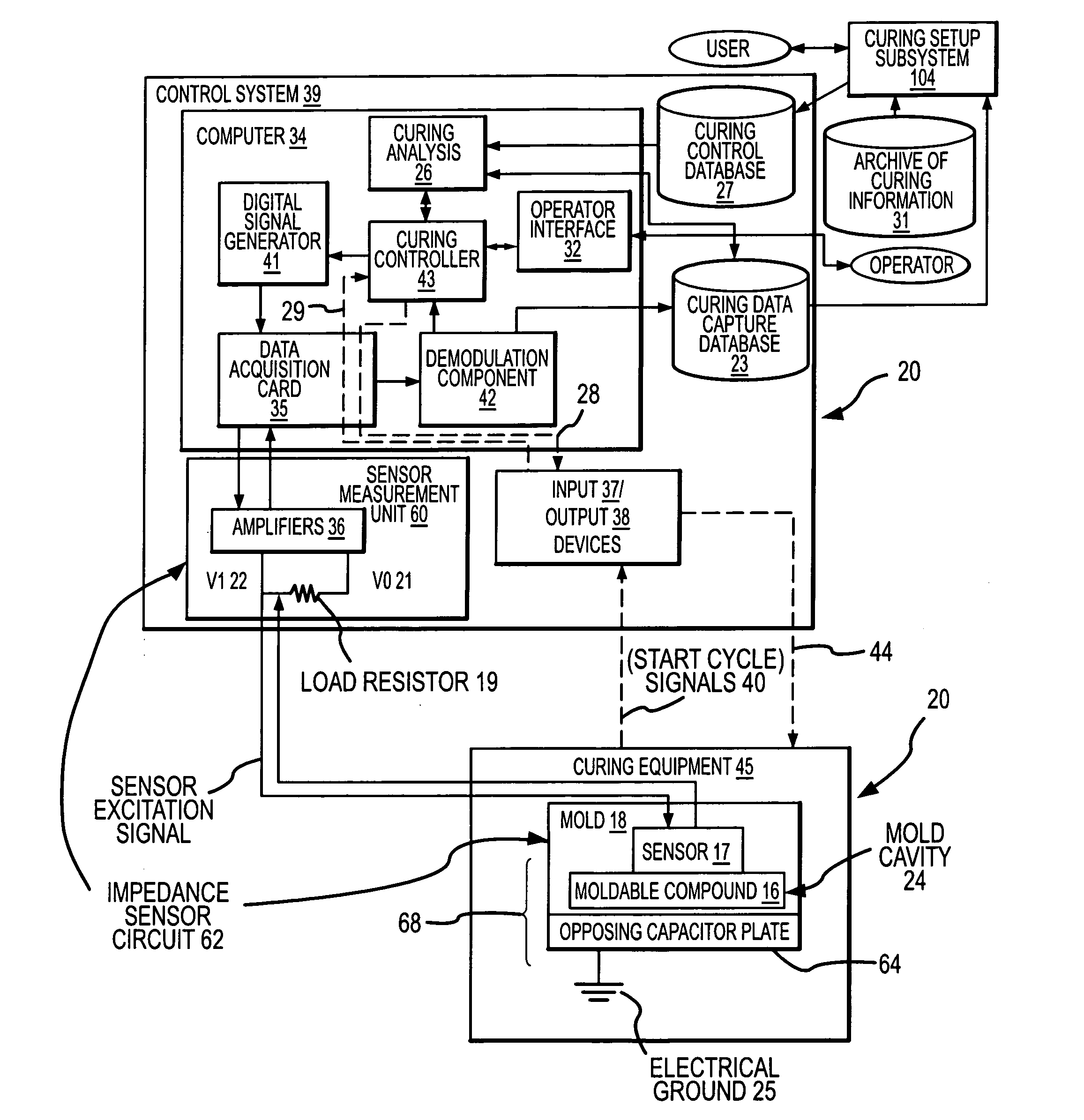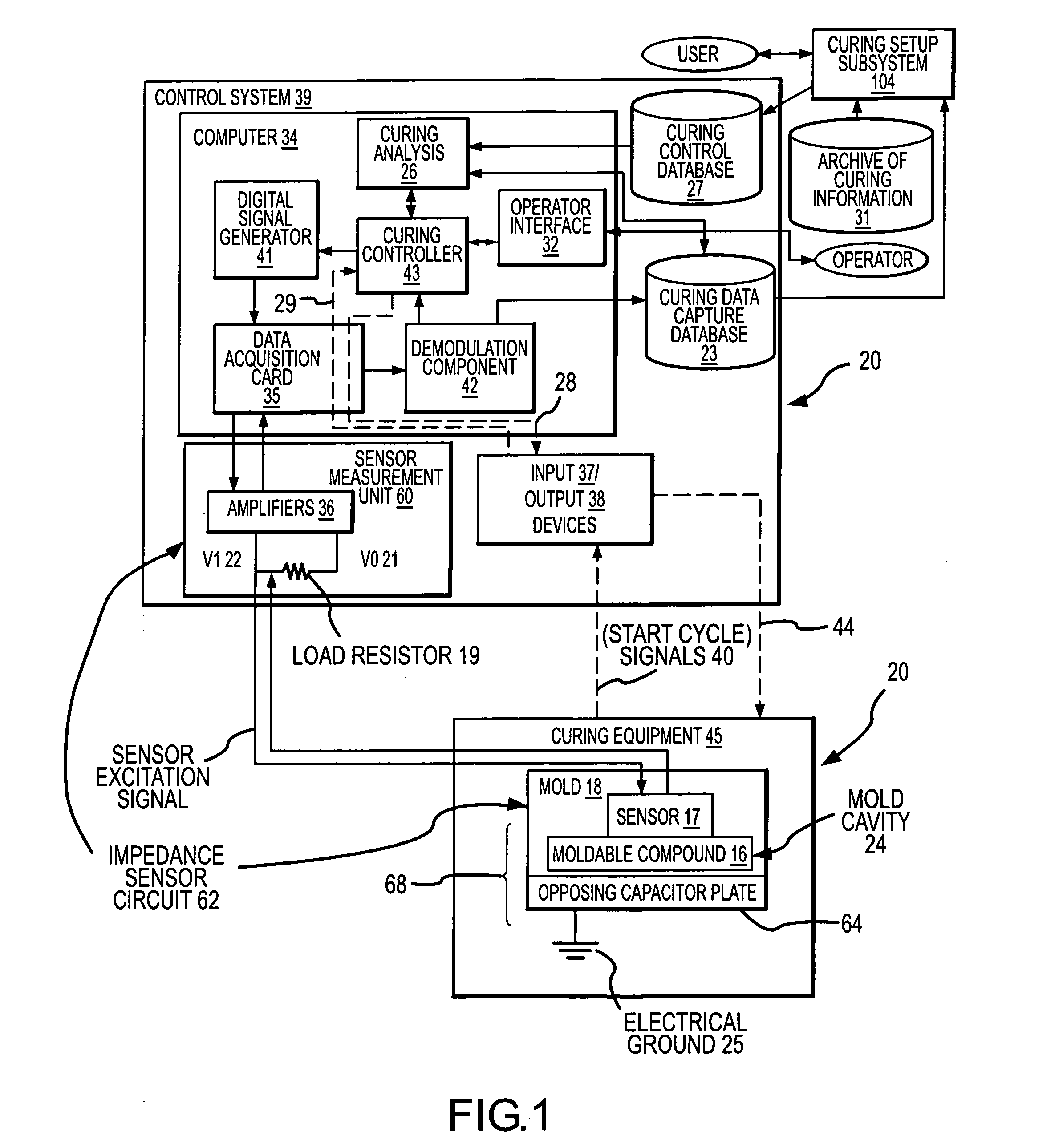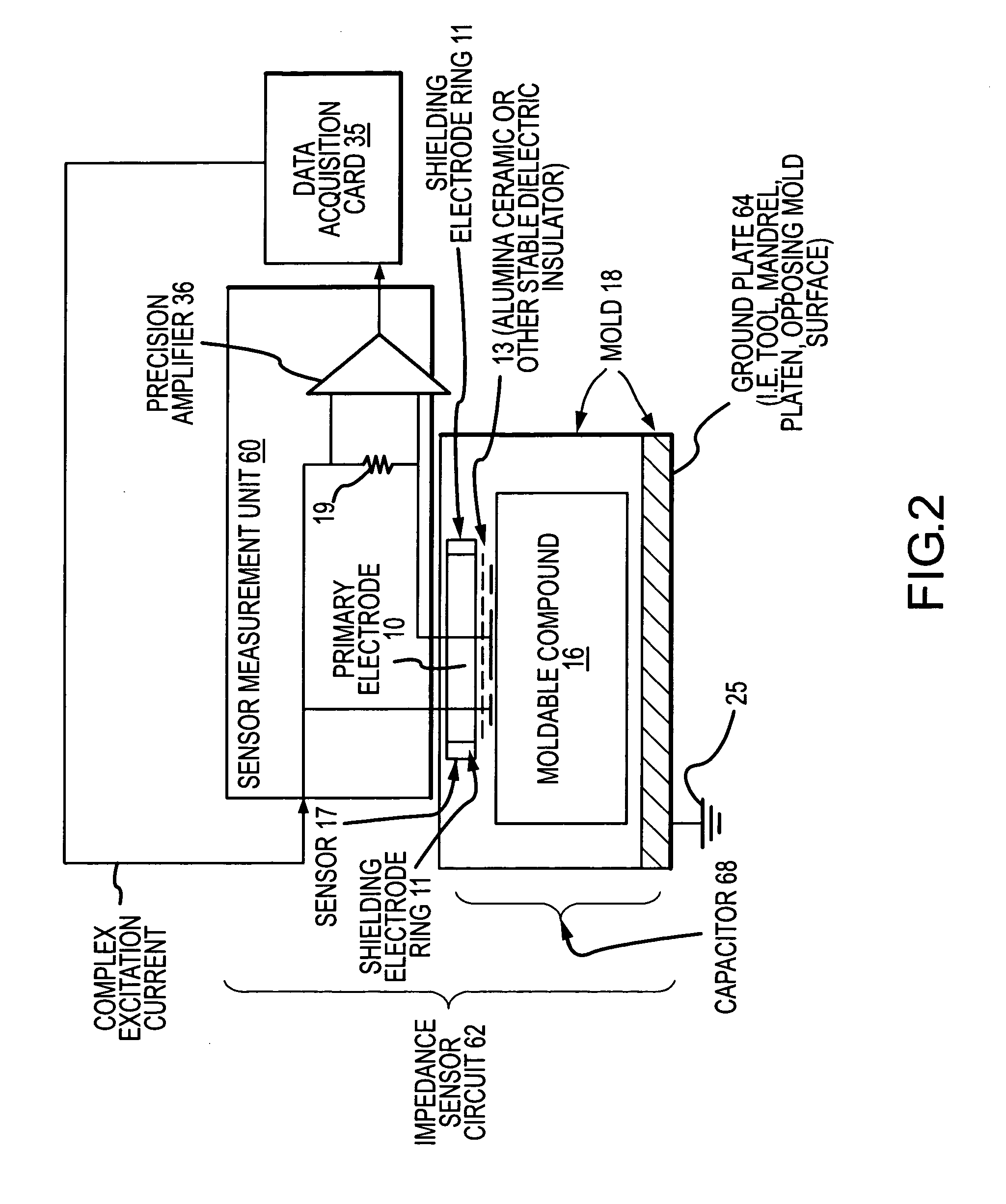Process and apparatus for improving and controlling the curing of natural and synthetic moldable compounds
a technology of curing process and curing solidification, which is applied in the direction of manufacturing tools, machines/engines, instruments, etc., can solve the problems of poor product uniformity and productivity reduction, and achieve the effects of improving the part formation, and improving the curing process
- Summary
- Abstract
- Description
- Claims
- Application Information
AI Technical Summary
Benefits of technology
Problems solved by technology
Method used
Image
Examples
Embodiment Construction
[0070]FIG. 1 illustrates an embodiment of the curing system 20 disclosed herein, wherein the curing system includes the following high level components: [0071] (A) Curing equipment 45 for curing parts therein; [0072] (B) A control system 39 for controlling the curing equipment 45 and adjusting curing parameters for reducing defects in parts cured in the mold 18; and [0073] (C) A curing setup subsystem 104 for determining a collection of initial curing parameters for a particular part, and for determining adjustments that are available to correct curing conditions that are likely to generate defective parts.
[0074] The curing equipment 45 includes the following high level components: [0075] (A.1) A mold 18 within which the moldable compound 16 is cured into a desired part, the mold having a mold cavity 24 for receiving a moldable compound 16 that is to be cured into a desired part. Within the body of the mold 18 there are a plurality of sensors 17 (only one is shown in FIG. 1) distri...
PUM
| Property | Measurement | Unit |
|---|---|---|
| temperature | aaaaa | aaaaa |
| voltage amplitude | aaaaa | aaaaa |
| frequencies | aaaaa | aaaaa |
Abstract
Description
Claims
Application Information
 Login to View More
Login to View More - R&D
- Intellectual Property
- Life Sciences
- Materials
- Tech Scout
- Unparalleled Data Quality
- Higher Quality Content
- 60% Fewer Hallucinations
Browse by: Latest US Patents, China's latest patents, Technical Efficacy Thesaurus, Application Domain, Technology Topic, Popular Technical Reports.
© 2025 PatSnap. All rights reserved.Legal|Privacy policy|Modern Slavery Act Transparency Statement|Sitemap|About US| Contact US: help@patsnap.com



